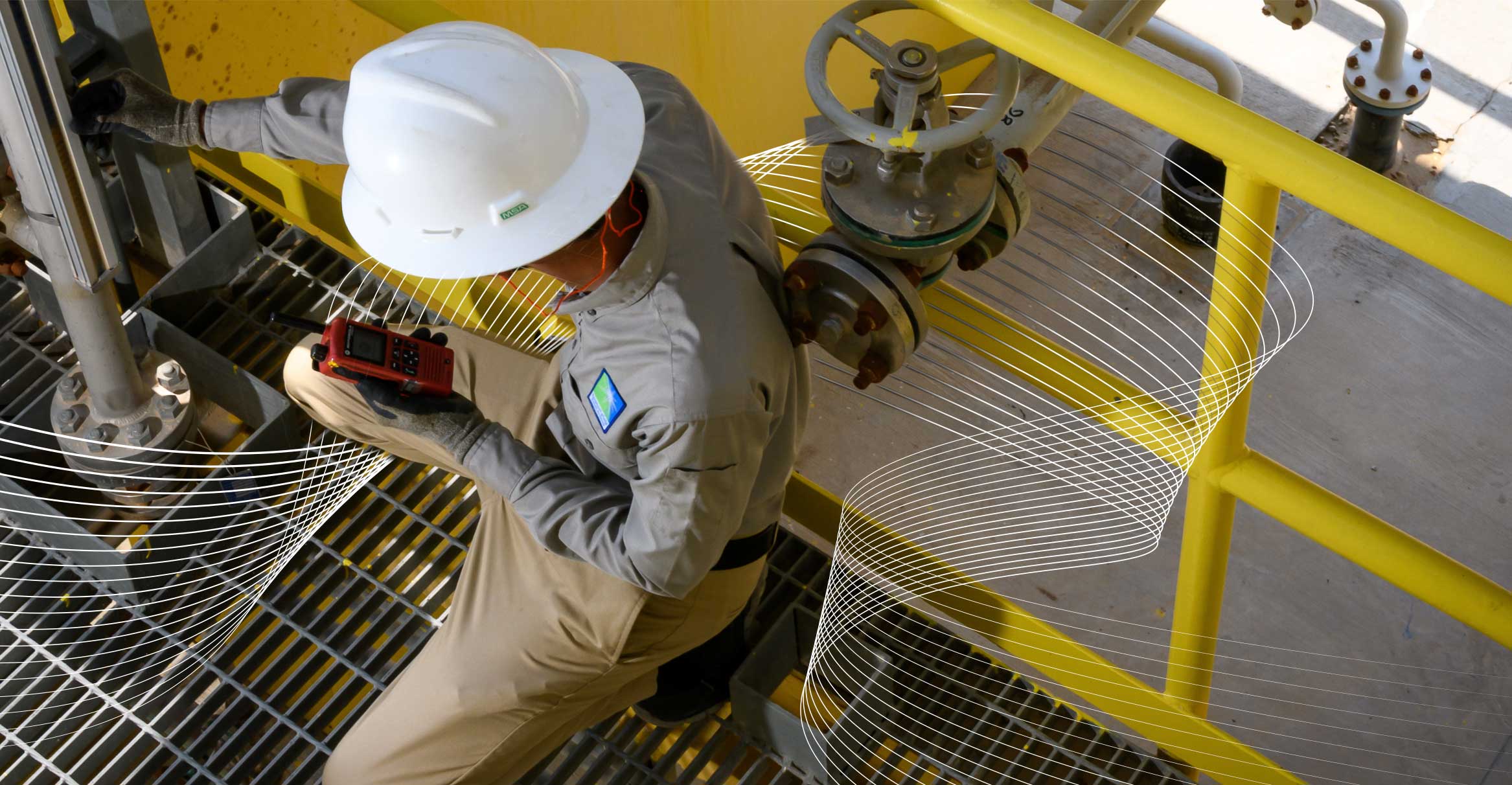Smarter oil and gas production
Tackling excess carbon dioxide.

- CO2 sustains natural life
- modern industrialization emits too much CO2
- advanced technology can remove and sequester CO2
Carbon dioxide (CO2) moves silently between our air, land, plants, animals, and people. Without CO2, natural life on Earth would not survive.
Bonded by one carbon and two oxygen atoms, CO2 uses its delicate lightness to perform life sustaining functions for our planet. For instance, devoid of CO2, plants could not make food.
Global industrialization has increased greenhouse gases (GHG) — such as CO2, methane (CH4), nitrous oxide (N2O), and water vapor (H2O) — emitted into our atmosphere. CO2, our life sustaining friend, has also become our climate change adversary.
Catching carbon
Today we have too much CO2 in the atmosphere. Carbon capture, utilization and storage (CCUS) is widely regarded as one of the primary ways toward managing the world’s excessive CO2 emissions.
The emissions reduction technology prevents CO2 from being released into the atmosphere, and instead, it can be applied across the energy system. Capturing carbon is used to help improve the quality of natural gas, and with advanced technology, CO2 can now be removed and sequestered.
First, CCUS captures CO2 at the source or directly from the air, and then, the technology compresses the CO2 down to one-500th of its large atmospheric size. After the CO2 is compressed, it can be transported for underground storage, or it can be recycled into a useful purpose.
Returning carbon to its source
A solitary steel web of pipes and tanks rises above central Saudi Arabia’s desert sands. Operating quietly within the metal configuration is a CO2 capture and enhanced oil recovery project.
At the Hawiyah natural gas liquids (NGL) recovery plant, CO2 is captured and reinjected back into the world’s largest discovered conventional onshore oil field, Ghawar.
At standard temperature and pressure, CO2 is a colorless gas of minimal weight. Compressing CO2 transforms it into a supercritical state.
Seven compression stages
Hawiyah NGL receives gas from the nearby Haradh gas plant. After separating the CO2 from the gas, an internally-geared compressor uses seven stages to compress the CO2.

At ‘Uthmaniyah the high-pressure CO₂ arrives at a tightly controlled row of four injector wells, four producer wells, and two observation wells — the latter four connected in real-time with flow measurement devices and remote-controlled choke valves, and outside operator Mohammed M. Alrashdi examines the product level of one of the project’s vessels.
At the fifth stage, the CO2 is routed to a gas dehydration unit, before being returned to the compressor for stages six and seven. The final stage compresses the gas to 1,500-1,600 psi, then pipes it 85 kilometers in an 8-inch alloy steel pipeline to the pilot site at ‘Uthmaniyah.
Here, the CO2 is released into four injector wells. Produced fluids from four adjacent oil producing wells travel through a trunk line to the separation plant for further processing in a fit-for-purpose high-pressure production trap.
Since 2015, up to 800,000 tons of CO2 have been reinjected at the ‘Uthmaniyah pilot site. The project is achieving both sizable CO2 sequestration, along with enhanced oil recovery.
Carbon reinjection into Ghawar oil field
Middle East's
most advanced large-scale CO₂ capture and reinjection project
Up to
800,000 tons of CO₂ reinjected each year since July 2015
Oil field sequestration
There are compelling reasons to inject CO2 into an oil and gas reservoir. Oil reservoir fluids — made up of oil, dissolved gas, salty water and some hydrogen sulfide (H2S) — are typically under pressure.
Extracting fluids means natural underground pressure can decrease over time. Flowing compressed CO2 into a maturing oil field facilitates easier oil recovery by swelling stubborn droplets.
Importantly, injecting CO2 for sequestration prevents it from being emitted into the atmosphere. It is a “carbon management solution” to sequester CO2 into oil reservoirs, explains the project’s team lead, Sunil L. Kokal, principal scientist with Aramco’s EXPEC Advanced Research Center.
“Capturing and injecting compressed carbon dioxide into an oil and gas reservoir is a technological solution to help the world reduce its emissions,” said Kokal. “Careful monitoring of our Hawiyah project shows a substantial portion of the CO2 remains stored in the Ghawar field.”
“Most of the captured CO2 is staying sequestered underground in the reservoir. Sequestration means the CO2 can no longer behave like a greenhouse gas.”
At the Shaybah oil field, in Saudi Arabia’s remote Rub’ al-Khali (Empty Quarter) desert, lean natural gas is returned back to the reservoir. The site’s natural gas liquid recovery plant removes high-value natural gas liquids (NGL) — a key raw material for chemicals and vehicle fuel blends — from Shaybah’s gas.
After the NGL is removed, the leftover H2S, CO2 and residual gas go back into the field. This use of waste gases reduces GHG emissions and also assists with oil recovery.
Mitigating emissions
Energy efficient industrial operations, when compared to their less efficient counterparts, can simultaneously reduce GHG emissions and operating costs. Actions to reduce energy usage in hydrocarbon production include cogeneration systems, renewables such as solar and wind, and flare gas recovery systems.
Helping to safeguard against leaks of invisible gas is cutting-edge technology, wisely-maintained infrastructure, and smart innovation. Also crucial are trained people diligently following production procedures, and safety measures.
More from Elements
The material in this article is intended to be for general informational purposes only, and readers should not place undue reliance on the statements or opinions therein. Any information provided speaks only as of the date this content was published and Saudi Aramco undertakes no obligation to correct, update, or revise any statements or opinions made in or implied by this article.



